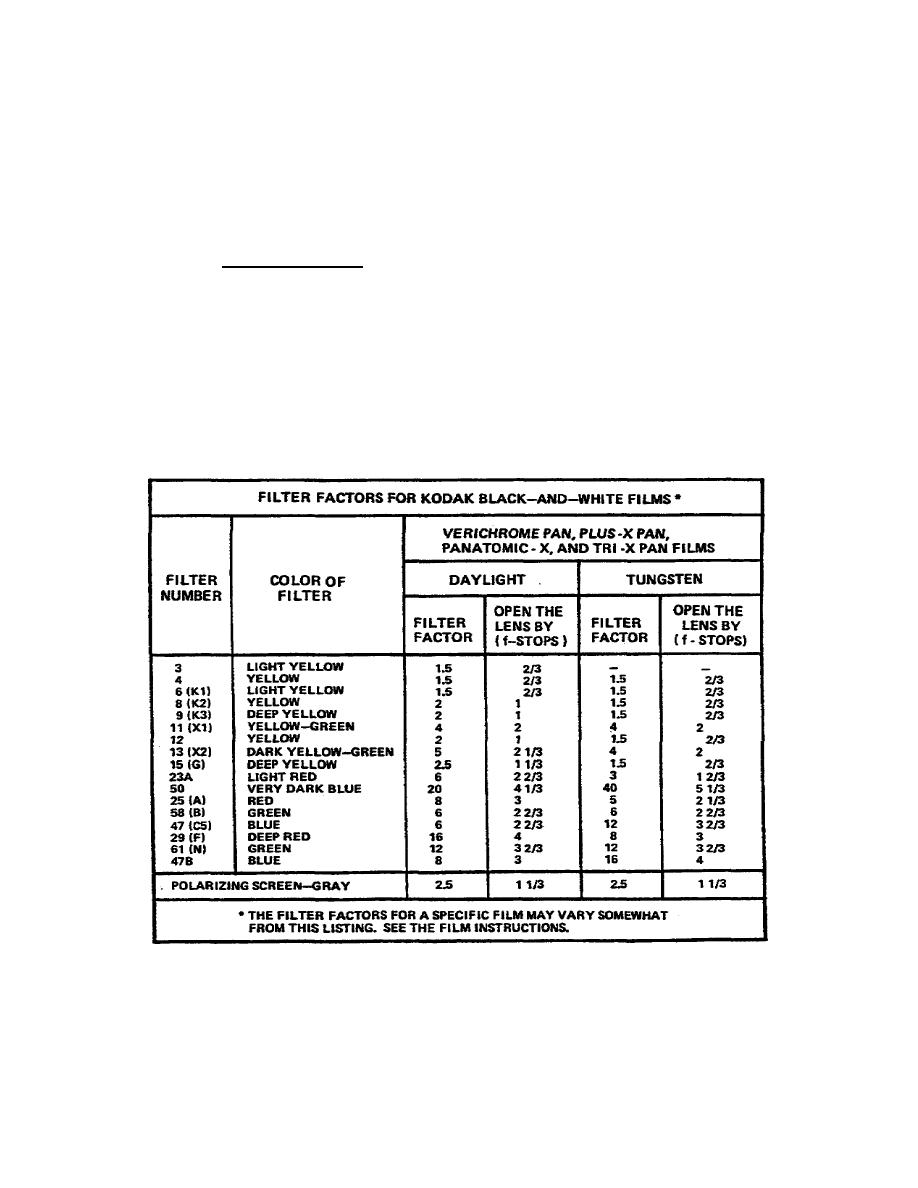
4.
If you've read the last three paragraphs carefully, you might have
already figured this out, but just to be sure, A FILTER PASSES ITS OWN COLOR
AND BLOCKS ITS COMPLEMENTARY COLORS. This is the main thing to keep in mind
when trying to predict what effect a filter will have on a scene.
5.
But there is a problem here.
If a filter takes away something even
from white (and grays as well, because they are simply darker shades of
white), what happens to the exposure?
Won't it take more to compensate?
Yes, it will, but the film manufacturers have already thought about this and
will give you filter factors in the instructions for each type of film they
sell. A filter factor is simply the amount you must multiply an exposure by
to compensate for what the filter is absorbing. If the factor is 2, then
you must give twice as much exposure; if it's 1-1/2, then you must give one
and one-half times as much exposure as you would without the filter. This
is about 2/3 of a stop. When you use a hand-held meter, you always figure
your basic exposure first, then add the exposure needed for the filter. Of
course if you want, you could adjust your meter by dividing the ISO speed by
the filter factor and use the result to set your meter or as a starting
point for the outdoor exposure table. Just don't forget to reset your meter
when you remove the filter (Table 2-1).
Table 2-1. *Filter factors for a variety of Kodak
film filter light source combinations
(Other manufacturers publish similar tables)
38



 Previous Page
Previous Page
